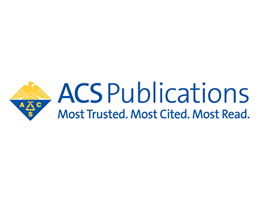FOR IMMEDIATE RELEASE | May 16, 2022
Recent advances in the aging of wine
The aging process of wine changes the final product, enhancing certain flavors and lessening others. And there are a variety of factors that impact the flavor — the combination of taste and aroma — of what’s poured into a glass. Below are some recent papers published in ACS journals that report insights into the aging behaviors and final flavors of red and white wines. Reporters can request free access to these papers by emailing newsroom@acs.org.
"Aging Behavior of Two Red Wines from the PIWI Pathogen-Resistant Grapevines ″Cabernet Eidos″ and ″Merlot Khorus″"
ACS Food Science & Technology
March 14, 2022
Cultivated grapevines are highly susceptible to mildews and other fungal diseases. So, researchers incorporated fungi-resistant genes from wild grapes into red wine-producing varieties. Wines from the new cultivars were aged for two years, and the resulting drinks were darker and had higher amounts of flavor compounds, including astringent-tasting tannins, than a traditional red wine blend.
"Natural Product Phenolic Diglycosides Created from Wildfires, Defining Their Impact on California and Oregon Grapes and Wines"
Journal of Natural Products
March 3, 2022
When grapes are exposed to wildfire smoke, they produce wine that can taste ashy, bitter or smoky — an unwanted profile known as “smoke taint.” In this proof-of-concept study, researchers developed an index to identify affected Cabernet Sauvignon and other red wines. They found that the levels of six glycosylated volatile phenols indicate the severity of smoke exposure in both grapes and aged wines.
"Monitoring of Sangiovese Red Wine Chemical and Sensory Parameters along One-Year Aging in Different Tank Materials and Glass Bottle"
ACS Food Science & Technology
Jan. 25, 2022
Here, researchers assessed the differences between Sangiovese wine aged in a variety of materials. They simultaneously kept wine in containers made of oak, glass, stainless steel, earthenware, and coated and uncoated concrete. The researchers concluded that earthenware and uncoated concrete, which maintain the wine’s color, may be good alternative materials to wooden barrels when volatile compounds from toasted oak aren’t wanted.
"Characterization of Odorants in a 10-Year-Old Riesling Wine"
Journal of Agricultural and Food Chemistry
Sept. 21, 2021
Most Riesling wines are consumed just a few years after they’re bottled. Sometimes they’re left longer, but the impact on the wines’ aroma isn’t well known. Now, in 10-year-old Riesling wine, researchers have identified 36 odorants, of which the most influential compounds had fruity, coconut, cooked apple, maple, cooked potato and petrol notes. Five aroma compounds had not been identified in Riesling wines before, suggesting that they arose during the longer bottle aging process.
To automatically receive press releases from the American Chemical Society, contact newsroom@acs.org.
Note: ACS does not conduct research, but publishes and publicizes peer-reviewed scientific studies.
Media Contact
ACS Newsroom
newsroom@acs.org


